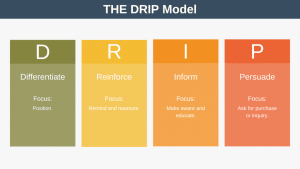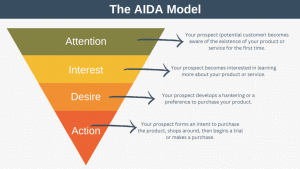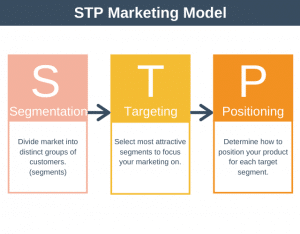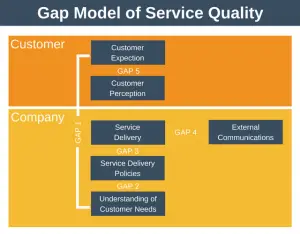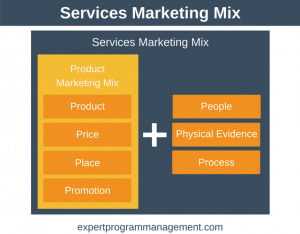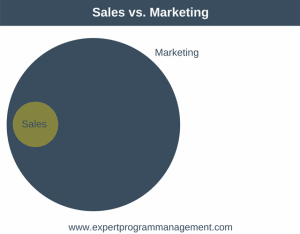The 4Ps of Marketing, also known as the marketing mix, is a tool that can help you offer the right product in the right place, at the right time, and at the right price.
Imagine you run a one-person startup and are in the process of creating a new product. You feel that all you have to do is create your product and then offer it to the market, and you’ll have people falling over themselves to be your customer.
Unfortunately, it’s rarely this simple. Being product-focused in this way is a mistake that many people make. To be successful in the market, you need to be laser-focused on creating what your customers want, and the 4Ps of Marketing can help you do this.
The 4Ps of Marketing
The 4Ps of Marketing is a tool to help you think about the customer-focused choices you have to make when bringing a product to market.
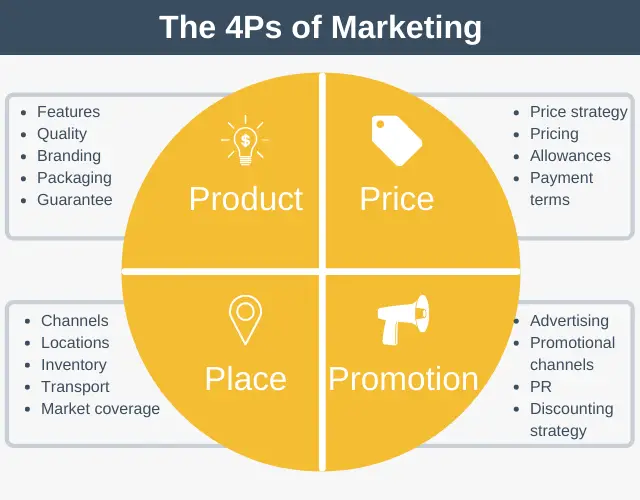
The 4Ps are:
- Product: What is it that you sell, and how does it fulfill your customers’ needs?
- Place: Where do you promote or sell your product?
- Price: How much is your product?
- Promotion: How do your ideal customers find out about you?
As you can see, the 4Ps of Marketing is essentially a set of questions you have to answer to give your product or service the best chance of being successful in the marketplace.
Let’s examine each of the 4Ps of Marketing in more detail.
1. Product
Creating a successful Marketing Mix begins with creating a product or service that fulfills a significant customer need.
Consumers purchase your product because it satisfies a need or want. These needs and desires are rarely basic; for example, a customer may buy a luxury car to fulfill their need for status.
Good marketers understand these needs and create and position products to cater to these needs. To understand your customer’s needs, it is essential to interact with real or potential customers and get their feedback and input.
The definition of a product not only refers to the actual good or service that you offer, but it also refers to how you package your product. The packaging of your product includes, amongst other things, the features of your product, its unique selling proposition, its branding, its packaging, any guarantee or warranty you offer, and your after-sales service.
Product is deliberately the first element of the 4Ps of Marketing. The reason for this is that it’s almost impossible to determine any of the other Ps if you haven’t clearly defined what your product is. For example, how can you set the price of a car if you don’t know whether you’re building a Mazda or a Ferrari?
2. Place
Place refers to how and where people will buy your products. You want to make sure that your products are available when and where customers want your products to be available.
Place also means making sure that your product is available in the right quantity to ensure that you’re able to satisfy the demand for your product.
A key question to answer during this stage of the 4Ps of Marketing is what is the most appropriate distribution channel for your product or service? Will you sell directly to the customer? If not, how will you get your product to where you are selling it?

Be aware that each intermediary to recruit to help you sell your product will expect to be paid to perform this role.
Other questions to answer in this element include, what form of transportation will you use to get your product to where you’re selling it, and how will you manage inventories?
Note that it is called multi-channel distribution when you sell your product via more than one distribution channel.
3. Price
Price refers to the price a customer must pay to purchase your product or service.
Price is the easiest element of the 4Ps to manipulate. You can change your price overnight and immediately see an impact on your revenue.
Determining a price for your product can be complex. Typically, you’ll want to consider three variables:
- Cost: how much your product costs to produce.
- Price: how much you charge customers for your product.
- Value: How much value your customers get from the product.
Where you focus amongst these three variables will depend on your business strategy. If your business strategy focuses on cost leadership, then you’ll want to minimize your costs and the price you charge. If your business strategy focuses on differentiation, that is, being unique in the marketplace, then you’ll want to focus on maximizing the value you provide.
4. Promotion
Once you’ve finalized the other three Ps, it’s time to promote your product. Promotion aims to persuade customers to buy your product.
Promotion is concerned with where, when, and how you’ll advertise your products and services. Examples of promotional channels include:
- Billboard advertising.
- Facebook advertising.
- Radio advertising.
- TV advertising.
- Social media advertising.
- Trade show stands.
When nonmarketers think about marketing, it is often only promotion that they think of as marketing. If you’re not a marketer, it’s important to realize that a marketer’s brief covers all of the 4Ps of Marketing.
Promotion is broader than just advertising, as it includes public relations outreach and any discounting strategies you use.
How to Use the 4Ps of Marketing
If you want a product to be successful in the market, then here is a six-step process you can use to develop your own marketing mix.
1. Align your product to serve specific customer needs
Your product should clearly meet your customer’s needs. You’ll need to perform customer research to ensure you give customers what they want.
In this step, you need to articulate precisely who your customers are and how your product uniquely meets their needs. You’ll use this information later when you construct your marketing messages.
2. Find out where your target audience hangs out/shops
Now that you know your ideal customers, you need to figure out where they hang out or shop. This might be online, such as in a special interest forum, or a physical location, such as an airport.
3. Determine a price for your product
Set a price for your product that will appeal to your target audience. Take into account your business strategy and the cost, price, and value variables to help you set your price.
4. Determine your messaging and channels
In this step, you determine the messages you’ll use to communicate the benefits of your product to your potential customers.
You also need to determine which marketing and distribution channels you’ll use to reach your ideal customers. For example, you might choose to use a combination of Facebook advertising and working with affiliates.
5. Check all the pieces fit together
The beauty of online advertising is it allows you to relatively cheaply test your messaging with your target audience before you fully launch and commit to a large advertising spend.
In this way, you can sanity-check your decisions so far before proceeding to the next step. Testing in this way can help you answer some important questions:
- Is the price right?
- Do customers want your product?
- Have you selected the best channels?
- Is your audience engaging with your ads and messaging?
This step is still important if you don’t plan to advertise online. Review your 4Ps of Marketing to check that all the pieces fit together and are pulling in the same direction.
6. Revisit your marketing mix over time
If you launch a successful product, your market share will grow over time. In response to this, your competitors will adapt their 4Ps. Over time, your customers’ behavior may also change.
Thus, the 4Ps of Marketing are not static, and you should adjust them regularly.
For example, maybe over time, you’ll need to add new ideal customer types as your market share grows. This simple decision will cause you to need to revisit all of the 4Ps to ensure that all elements are aligned and working together to attract these new types of customers.
4Ps of Marketing Template
If you’d like to perform your own 4Ps of Marketing exercise, you can download our 4Ps of Marketing template here.
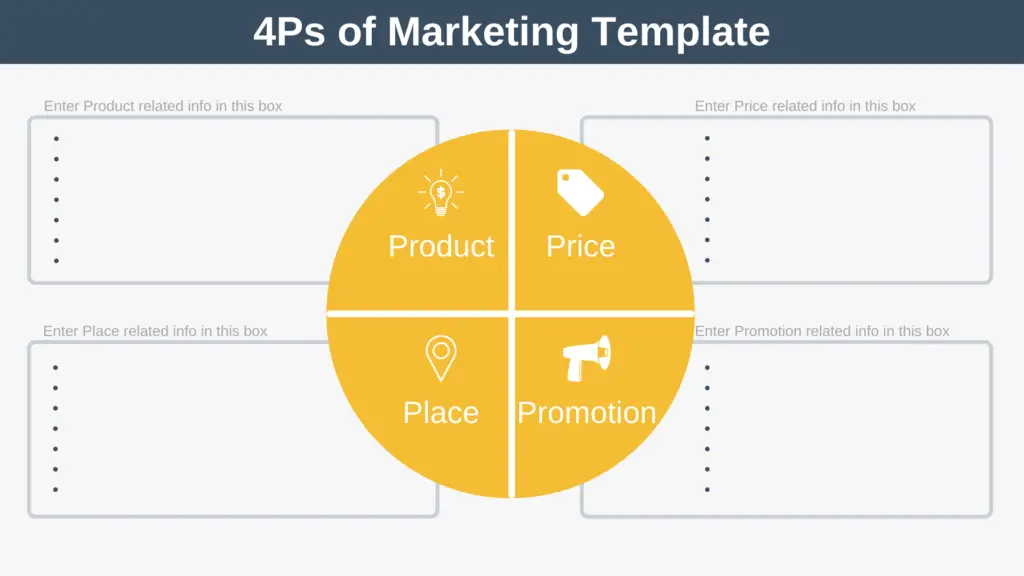
4Ps of Marketing Example
To bring everything we’ve covered together, let’s work through an example of using the 4Ps of Marketing in practice.
Imagine you are creating a course teaching English speakers to speak Spanish. Let’s work through each of the six steps to see what your marketing mix might look like.
1. Align your product to serve specific customer needs
There are hundreds of other Spanish courses in existence, so why should someone choose yours?
One way to think about this problem is that right now, your potential customers are living unhappily on an island where they don’t speak Spanish, and what they want to do is get to the island where they do speak fluent Spanish.

Unfortunately, there are many bridges available to them to get to the speaking Spanish island, so why should they choose yours? Crafting your unique selling proposition (USP) is all about giving potential customers a reason to cross your bridge rather than a competitor’s.
Your USP boils down to how you slice and dice your product to offer something unique. Ideally, to determine your USP, you should go out into the marketplace and talk with potential customers.
Assuming you have done this, then a few examples of how you might uniquely craft a Spanish course are:
- Learn the 1,000 most common Spanish words quickly.
- Watch your way to Spanish fluency (for a video-based course).
- Learn Spanish in just 10 minutes a day.
- Speak like a local in just three months.
Each of these USPs gives potential customers a reason to choose your bridge instead of your competitors because they distinguish your product from those of your competitors.
You can create a USP even if your product isn’t all that different from your competitors. The key is that you slice and dice how you describe your product so that your potential customers perceive a difference.
2. Find out where your target audience hangs out/shops
This step is all about examining the place element in the 4Ps of Marketing model. In what places might you sell your course? Well, if this were 1995, you’d have more limited choices than you have today:
- You could work with a publisher to sell your course in written format in bookstores.
- You could sell your course directly to your customer via mail order by advertising in newspapers, magazines, etc.
These days you have more options available to you, including:
- Customers could purchase your course directly from your website.
- You can work with bloggers to promote your course and, in return, pay them a commission for each sale they make.
- You could provide your course as an app, downloadable via an app store.
3. Determine a price for your product
How much will you charge for your Spanish course? Let’s examine the three variables:
- Cost: while your course may have cost a lot to produce, but the marginal cost (the additional cost) of selling one additional subscription to your course is minimal.
- Price: your product strategy is one of differentiation, so you’ll be looking to charge a high fee for access to your course.
- Value: while the value of speaking a second language is considerable, people are used to paying low monthly amounts to access online language courses.
Taking all of this into account, your pricing options might be:
- $10 per month for access.
- Certain features are free forever, but you need to pay to access premium features.
4. Determine your messaging and channels
Suppose your USP was: watch your way to Spanish fluency. You might decide to keep this as your messaging but add some additional messages to complement it, such as:
- Why read a book when you can watch yourself to Spanish fluency?
- Sit back, relax, and get fluent in Spanish?
- Sound like a local without opening a Spanish book.
In this step, you also decide that your primary channels to attract new customers will be Facebook and Instagram advertising.
5. Check all the pieces fit together
You’ve now completed all of the 4Ps of Marketing. Your completed 4Ps of Marketing template will look something like this:
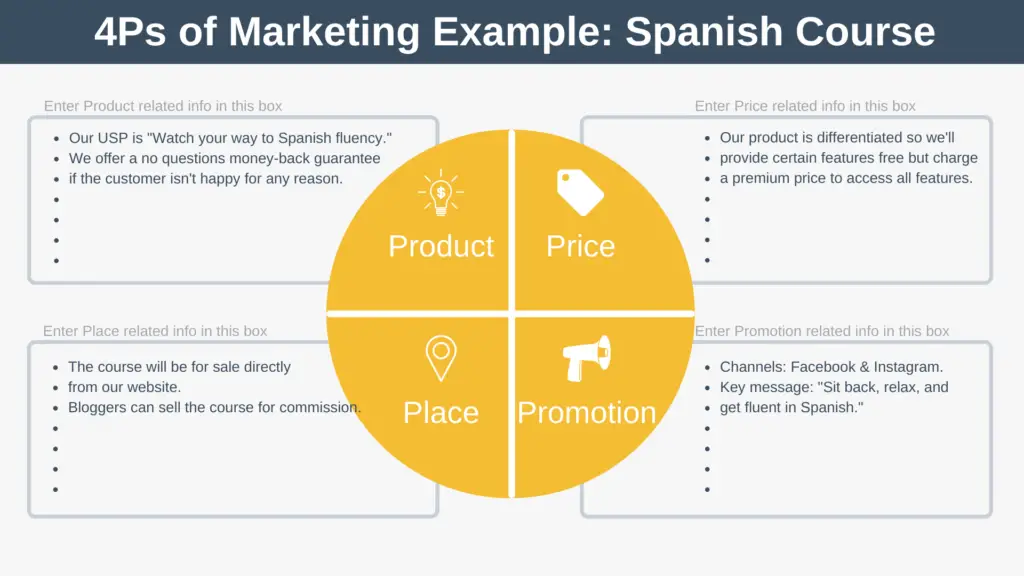
Now it’s time to sanity check that everything makes sense.
In this example, you’re going to do this by running test ads using Facebook. The point of these tests is to determine if people are engaging with your messaging and, therefore, if they are interested in what you have to offer.
Fortunately, in this example, people do engage with your test ads, so you’re in a position to launch when you’re ready.
6. Revisit your marketing mix over time
You haven’t launched yet, so this step isn’t relevant to you right now, but you make a note to revisit the 4Ps of Marketing regularly after launch.
Advantages and Disadvantages
There are several advantages and disadvantages associated with the 4Ps of Marketing model.
Advantages
- It helps you to understand what your product can offer to your customers.
- It provides a way to build a complete marketing plan that begins with focusing on aligning your product to your customer’s desires.
- It allows you to see the critical components of even the most complex marketing plans on a single page.
Disadvantages
- It provides no mechanism to measure the success of your marketing efforts.
- Price is fundamental to the model, but brand building isn’t. This focus on price rather than brand can be corrosive to your ultimate profitability.
- The model is high-level and doesn’t go into detail.
- While the model can help you put together a marketing plan, the quality of your marketing plan will be determined by the quality of the people who put your marketing plan together.
- It can take significant time to put a 4Ps of Marketing plan together.
Summary
The 4Ps of Marketing model, also known as the marketing mix, is a tool that can help you offer the right product in the right place, at the right time, and at the right price.
The model begins by helping you create a product that your customers actually want to buy and moves on to help you determine where you will sell your product, how much you will charge, and finally, how you will promote your product.

